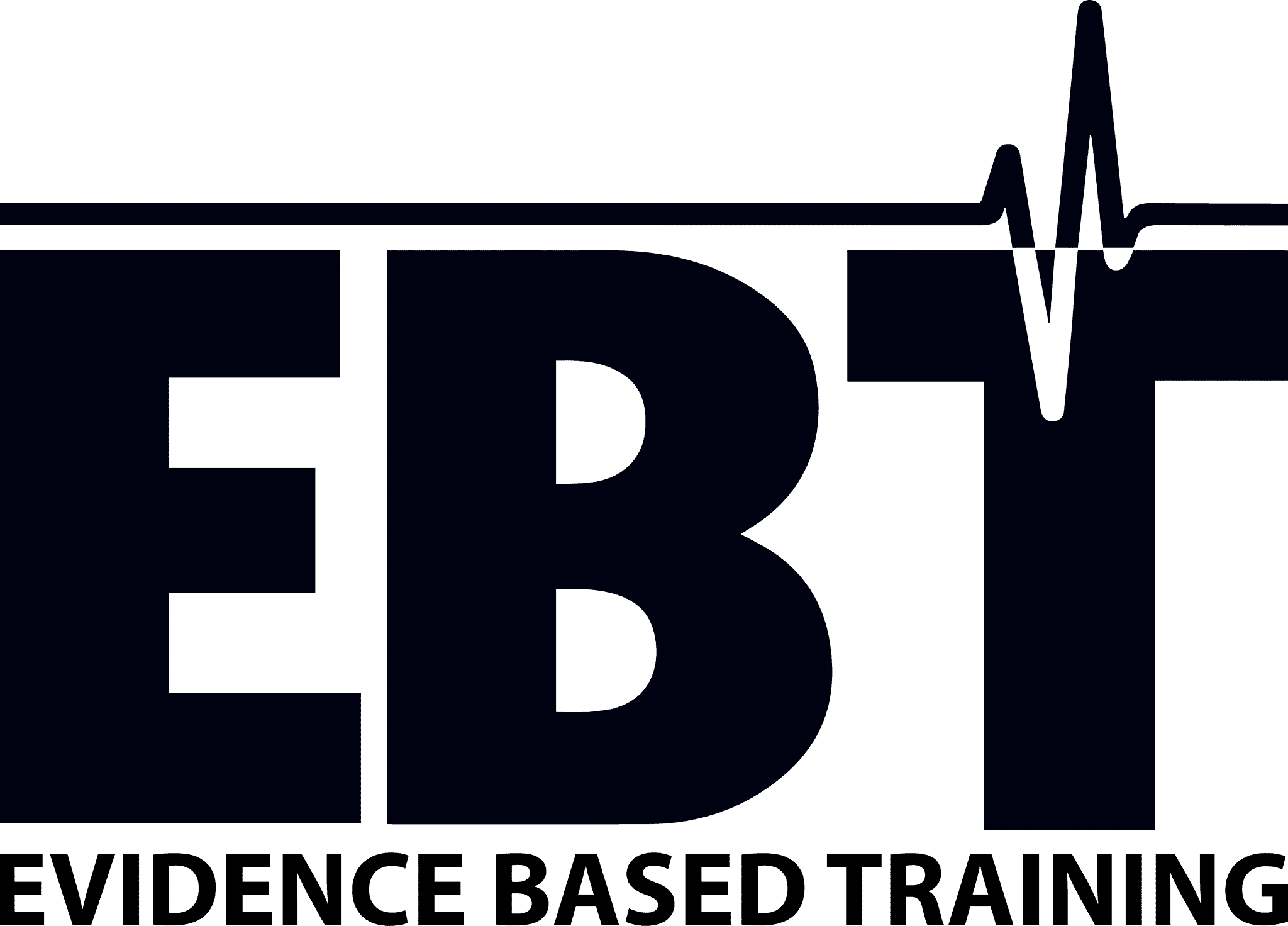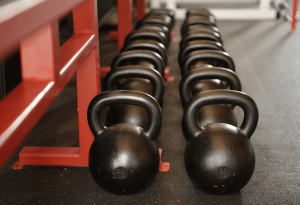Team EBT Workouts
JONAS’ WORKOUT ROUTINE
Who is this Routine Suited For?
This routine is for the busy work and/or family oriented man or woman that wants to be healthy and still make the most of the hours of the day.
It about more than just the hours at the gym/ track, it is more of a lifestyle and a mind-set that should be part of every day. My main goal is to have and maintain an active lifestyle together with my wife and kids.
“Adroit” Fitness
The goal is to reach a state of “conscious fitness”, using science to find a smart and time efficient workout routine to become and stay healthy. Why put in ten hours of work a week if you can get the same results in five? Don’t get me wrong, I love being in the gym or out in the woods running, I just don’t have the time anymore. The French word adroit comes to mind, meaning:
1. expert or nimble in the use of hand or body.
2. cleverly skillful, resourceful or ingenious.
Focus on Three Dimensions of Health & Well-Being
- Disease Prevention and Life Preservation
You will decrease the risk of acquiring cardiovascular diseases, diabetes, cancers and most other diseases. (1)
- Psychological and Physical Performance
You will be prepared for everyday challenges and arms yourself to handle extraordinary events. (2)
- Looking Good
Period. Since there is limited evidence that you can consistent weight loss is possible, the mail purpose here is prevention of weight gain. Follow this routine and you can buy a high quality suit today and wear it for the rest of your life. (3)
In summary these points will make you live longer, heathier and probably make you happier.
The Concept
Stay Active Every Day.
Walk. Walk or bike to work if possible. Walk/bike to the commute, stay standing on the commute, take the stairs and walk in the escalators. It’s usually not enough to just tell yourself that you’re going to do these things, you need to plan when to do them and actively engage in each new habit for at least 70 days. The EBT Habit Tracker is a great way to accomplish this. (4-5)
Vigorous Activity 1-2 Days a Week
Chances are, you will find yourself having 30 minutes “over” at some point during your week. Use it! The most time efficient way is to go for a run! Alternatively you can do some pushups, burpees or crunches at home. Be moderate in the distances if running because if you only run 1-2 times a week there is a good chance that your body isn’t ready for long distances yet. These things take time. (6-7)
Strength Training 2-4 Days a Week.
You can divide this up after preference, if you can only train 2-3 times a week I recommend total body workouts, if 3-4 days you can do a “split” and train specific body parts on a chosen day. The main idea is to get two to three sessions per muscle group each week. If you do a total body workout and you find yourself not having the time to hit the gym again for a couple of days, don’t worry! You have at least gotten one session for all the big muscles. Studies have shown that training a muscle group 2-3 times a week as compared to once a week show significant muscle- and strength gains. (8-11)
Training Set-Up: KISS (Keep It Simple Stupid)
Think of the main movements where you can lift heavy and use variations of these. This will give you the most “bang for your buck” in terms of activating many muscles and saving time. Choose one from each category and get it done throughout the week:
- Upper-body press (bench press, dumbbell bench press, machine press)
- Upper-body pull (barbell rows, dumbbell rows, cable rows, machine rows)
- Upper-body overhead press (dumbbell overhead press, military press)
- Upper-body overhead pull (lat pulldowns, pull-ups)
- Lower-body push (squats, lunges, leg press)
- Lower-body pull (deadlift variations)
Additional Exercises
- I usually warm up using prehab exercises for shoulders, knees and hips.
- It is nice to mix the gym sessions with a session “au naturel”, i.e. with no weights. Do variations of push- ups, sit-ups, lunges, jumps, pull-ups and short sprints.
- Add some core work with, for example, hanging leg raises and Arnold crunches.
- Add some complementary isolation work if you have the spare time: back extensions, shrugs and calve raises.
- I like to finish with couple of sets biceps curls and triceps pushdowns ?
How Many Reps and Sets (Volume)?
I really trying not to go overboard with the sets for each muscle group. If you go too hard you will need more recovery and have to wait a long time until the next session. Generally, a maximum of two different exercises per muscle group and between 6-8 working sets.
Research seems to be inconclusive in this area and it seems that you can gain muscle using both a low or high volume setup. However, the bulk of the studies have shown a dose-response relationship between volume and hypertrophy (12-13). It has also been stated that increasing the volume is one of the most easily modifiable variables in stepping up the game in the gym to gain more muscle (13).
However, when doing a total body workout routine three times a week, you simple cannot go overboard with volume, you will not have time to heal between workouts.
How Heavy (Intensity)?
Data seems to support the old adage 70-85% of maximum when training for hypertrophy. However, studies have shown that training with lower and higher intensities induces hypertrophy as well. My take home message is to vary your intensity and use periodization to challenge your body. (14)
How Long to Rest Between Sets?
A study of trained men by Ahtiainen et al. found no difference in muscle strength, size or hormonal adaptations after a 6-month hypertrophic training setup with either a 2- or 5-minute rest period between sets. A conclusion might be that is not beneficial to rest more than 2 minutes between sets. (15)
A review article took a look at the data and although many studies show conflicting results there seems to be a benefit for taking longer rest periods between sets when doing heavy lifting. To quote the article “This is logical in light of the well-known detrimental effects of fatigue on force production and electrical activity in the working muscle” (16). For me, it also makes sense.
Another review article has come to a similar conclusion: longer rest intervals (3-5min) are needed when doing heavy lifting while shorter rest intervals (30-60s) may be enough when doing high-rep hypertrophy training (17). The latter has been shown to acutely increase growth hormone levels, which is thought to be one mediator of the beneficial effects of high rep training.
Even if longer rest intervals may boost gains, we also need to consider that we are aiming for a time-efficient workout routine. I therefore use the sweet spot of 90 – 150 seconds rest between sets. The lower end of the spectrum during higher rep routines and the higher end during heavy days.
An Example
While every person has different circumstances, I want to put the above together into an example of how a week might look like:
Monday: Run-Day! 30 minutes light jogging in the morning or after work!
Tuesday: Full Body Workout using dumbbell bench press, dumbbell rows, dumbbell overhead press, pull-ups, leg press and triceps extensions. 3 sets each, 90 seconds rest.
Wednesday: Rest and Recover
Thursday: Full Body Workout with squats, barbell bench press, cable rows, shoulder press machine, lat-pulldowns and bicep curls. 3 sets each, 90 seconds rest.
Friday: Rest and Recover
Saturday: Weekend “au naturel” session with pushups, pull-ups, crunches, and lunges. 2 sets each to failure, 60 seconds rest.
Sunday: Rest and Recover
Remember: This is just an example with 2 weight sessions and 2 cardio session per week. You can start with just one weight session and one cardio session a week if you are completely new. Do what you can maintain, and switch things up every 12 weeks or so.
That’s My Routine. Take Notes, Make a Plan and Get Out There!
Article by Jonas Liefke, Dad, husband, medical student, and Team EBT member. www.jonasliefke.com
References (DOI or PMID):
- 1016/j.pcad.2014.09.011
- 10075319
- 16639173
- 1001/jamainternmed.2015.0533
- http://www.who.int/dietphysicalactivity/factsheet_adults/en/
- 1016/j.pcad.2017.03.005
- 1016/j.mayocp.2015.08.001
- 17326698
- 1007/s40279-016-0543-8
- 1007/s40279-016-0640-8
- 1519/JSC.0000000000000970
- 17326698
- 1007/s40279-017-0793-0
- 17326698
- 1519/15604.1
- 17326698
- 2165/11315230-000000000-00000









